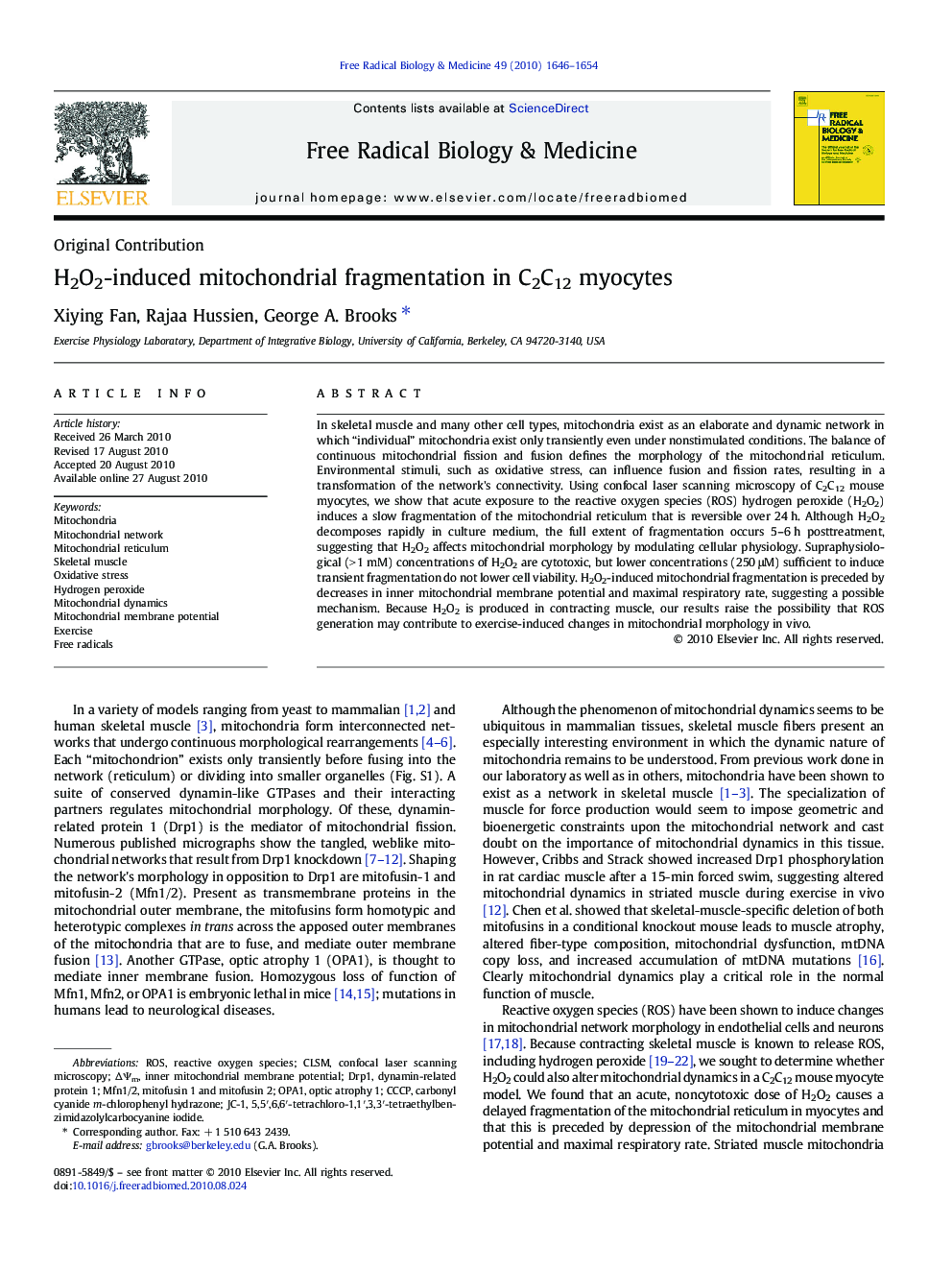| Article ID | Journal | Published Year | Pages | File Type |
|---|---|---|---|---|
| 1909461 | Free Radical Biology and Medicine | 2010 | 9 Pages |
In skeletal muscle and many other cell types, mitochondria exist as an elaborate and dynamic network in which “individual” mitochondria exist only transiently even under nonstimulated conditions. The balance of continuous mitochondrial fission and fusion defines the morphology of the mitochondrial reticulum. Environmental stimuli, such as oxidative stress, can influence fusion and fission rates, resulting in a transformation of the network's connectivity. Using confocal laser scanning microscopy of C2C12 mouse myocytes, we show that acute exposure to the reactive oxygen species (ROS) hydrogen peroxide (H2O2) induces a slow fragmentation of the mitochondrial reticulum that is reversible over 24 h. Although H2O2 decomposes rapidly in culture medium, the full extent of fragmentation occurs 5–6 h posttreatment, suggesting that H2O2 affects mitochondrial morphology by modulating cellular physiology. Supraphysiological (> 1 mM) concentrations of H2O2 are cytotoxic, but lower concentrations (250 μM) sufficient to induce transient fragmentation do not lower cell viability. H2O2-induced mitochondrial fragmentation is preceded by decreases in inner mitochondrial membrane potential and maximal respiratory rate, suggesting a possible mechanism. Because H2O2 is produced in contracting muscle, our results raise the possibility that ROS generation may contribute to exercise-induced changes in mitochondrial morphology in vivo.
